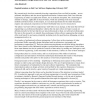Free Online Productivity Tools
i2Speak
i2Symbol
i2OCR
iTex2Img
iWeb2Print
iWeb2Shot
i2Type
iPdf2Split
iPdf2Merge
i2Bopomofo
i2Arabic
i2Style
i2Image
i2PDF
iLatex2Rtf
Sci2ools
DAGSTUHL
2007
2007
Interdisciplinary Design Research for End-User Software Engineering
rocesses involve modeling – simplifying or abstracting some aspects of the problem domain in order to plan and evaluate design decisions. The use of representations to reason about future consequences is fundamental to end-user software engineering. The constraints that representations place on design activities are described by the cognitive dimensions of notations framework [4], and in turn by a great variety of research into visual representations. reasoning about the future can be described in terms of the attention investment model [5]. A productive approach to end-user software engineering is to modify users' perception of this investment, whether by Burnett's Surprise-Explain Reward strategy, or by the use of machine techniques to infer possible abstractions that might be suggested to the user [6]. Finally, I am interested in the extent to which all designers experience their work as creative. This experience should be available to end-users too, not only creative pr...
Burnett's Surprise-Explain Reward | DAGSTUHL 2007 | End-user Software Engineering | Software Engineering | User Interfaces |
| Added | 29 Oct 2010 |
| Updated | 29 Oct 2010 |
| Type | Conference |
| Year | 2007 |
| Where | DAGSTUHL |
| Authors | Alan F. Blackwell |
Comments (0)

